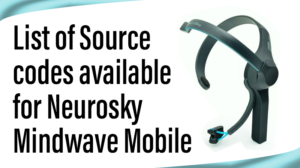
Internet of Things Communication Protocol-IoT Master Class-Day 2
Bluetooth and BLE
●The frequency range supported in Bluetooth vary from 2.4 GHz to 2.483 GHz. It covers less distance than Zigbee. ●Bluetooth is a wireless technology standard created for Short range
●Ideal for Speakers, Printers which could communicate in short distance
●Bluetooth Low Energy—abbreviated Bluetooth LE—was originally branded as “Bluetooth 4.0” when it was created in 2011. Its primary benefit (and the difference from “regular” Bluetooth) is its low power consumption. Ideal for IoT ●Bluetooth is supported by Bluetooth SIG
ZigBee
●ZigBee is a mesh network protocol designed to carry small amounts of data across medium distances.
●Zigbee was designed for building and home automation applications, and it’s one of the most popular mesh protocols in IoT environments.
●A short-range and low-power protocol, Zigbee can be used to extend communication over multiple devices.
● It has a longer range than BLE, but it has a lower data rate than BLE.
Z-Wave
●Another proprietary option, Z-Wave is a wireless mesh network communication protocol built on low-power radio frequency technology. Like Bluetooth and Wi-Fi, Z-Wave lets smart devices communicate with encryption, thereby providing a level of security to the IoT deployment.
●It’s commonly used for home automation products and security systems, as well as in commercial applications such as energy management technologies.
●It operates on 908.42 MHz radio frequency in the U.S.; although, its frequencies vary country by country.
●Z-Wave is supported by the Z-Wave Alliance,
LoraWAN
●LoRa, for long range, is a noncellular wireless technology that, as its name describes, offers long-range communication capabilities. It’s low power with secure data transmission for M2M applications and IoT deployments. A proprietary technology, it’s now part of Semtech’s radio frequency platform.
●LoRaWAN is an open protocol that enables IoT devices to use LoRa for communication.
Cellular
●Cellular is one of the most widely communications range over longer distances.
● Although 2G and 3G legacy cellular standards are now being phased out, telecommunications companies are rapidly expanding the reach of newer high-speed standards — namely 4G/LTE and 5G.
●Cellular provides high bandwidth and reliable communication.
● It’s capable of sending high quantities of data, which is an important capability for many IoT deployments.
● However, those features come at a price, higher cost and power consumption than other options
MQTT- Message Queuing Telemetry Transport
●Developed in 1999 and first known as Message Queuing Telemetry Transport, it’s now just MQTT. There is no longer any message queueing in this protocol. MQTT uses a publish-subscribe architecture to enable M2M communication ●Its simple messaging protocol works with constrained devices and enables communication between multiple devices. It was designed to work in low-bandwidth situations, such as for sensors and mobile devices on unreliable networks.
AMQP-Advanced Message Queuing Protocol
●AMQP is an open standard protocol used for more message-oriented middleware. As such, it allows for messaging interoperability between systems regardless of the message brokers or platforms being used.
●It offers security and interoperability, as well as reliability, even at a distance or over poor networks.
●It supports communications, even when systems aren’t simultaneously available.
LWM2M- Lightweight M2M (LWM2M)
●Lightweight M2M (LWM2M) as “a device management protocol designed for sensor networks and the demands of an M2M environment.”
●This communication protocol was designed specifically for remote device management and telemetry in IoT environments and other M2M applications
●it’s a good option for low-power devices with limited processing and storage capabilities.
CoAP- Constrained Application Protocol
●The IETF Constrained RESTful Environments working group in 2013 launched CoAP, for Constrained Application Protocol, having designed it to work with HTTP-based IoT systems.
● CoAP relies on the User Datagram Protocol to establish secure communications and enable data transmission between multiple points. Often used for machine-to-machine (M2M) applications
● CoAP enables constrained devices to join an IoT environment, even with the presence of low bandwidth, low availability and/or low-energy devices.


